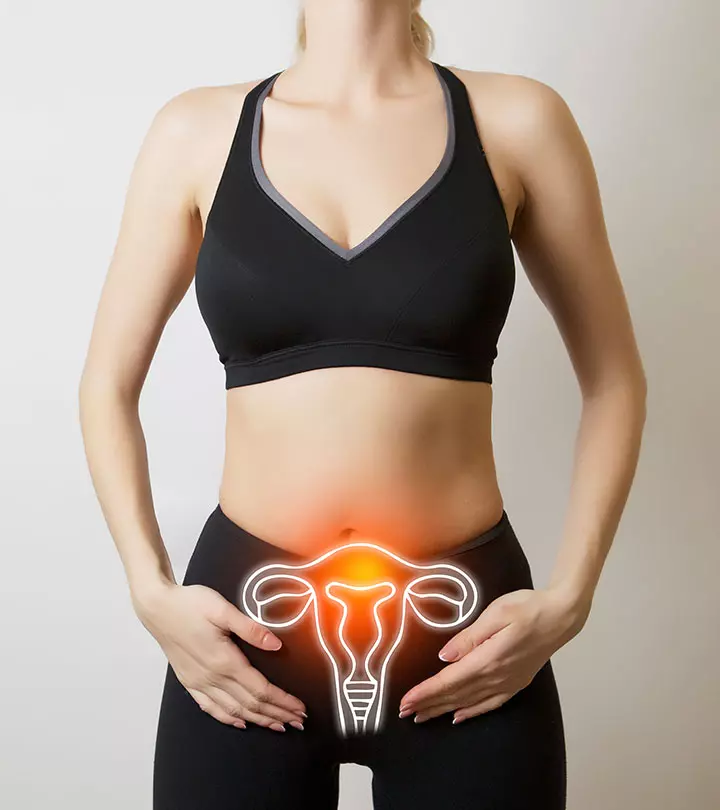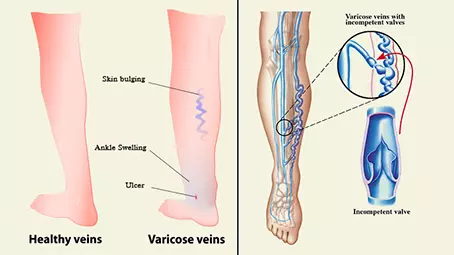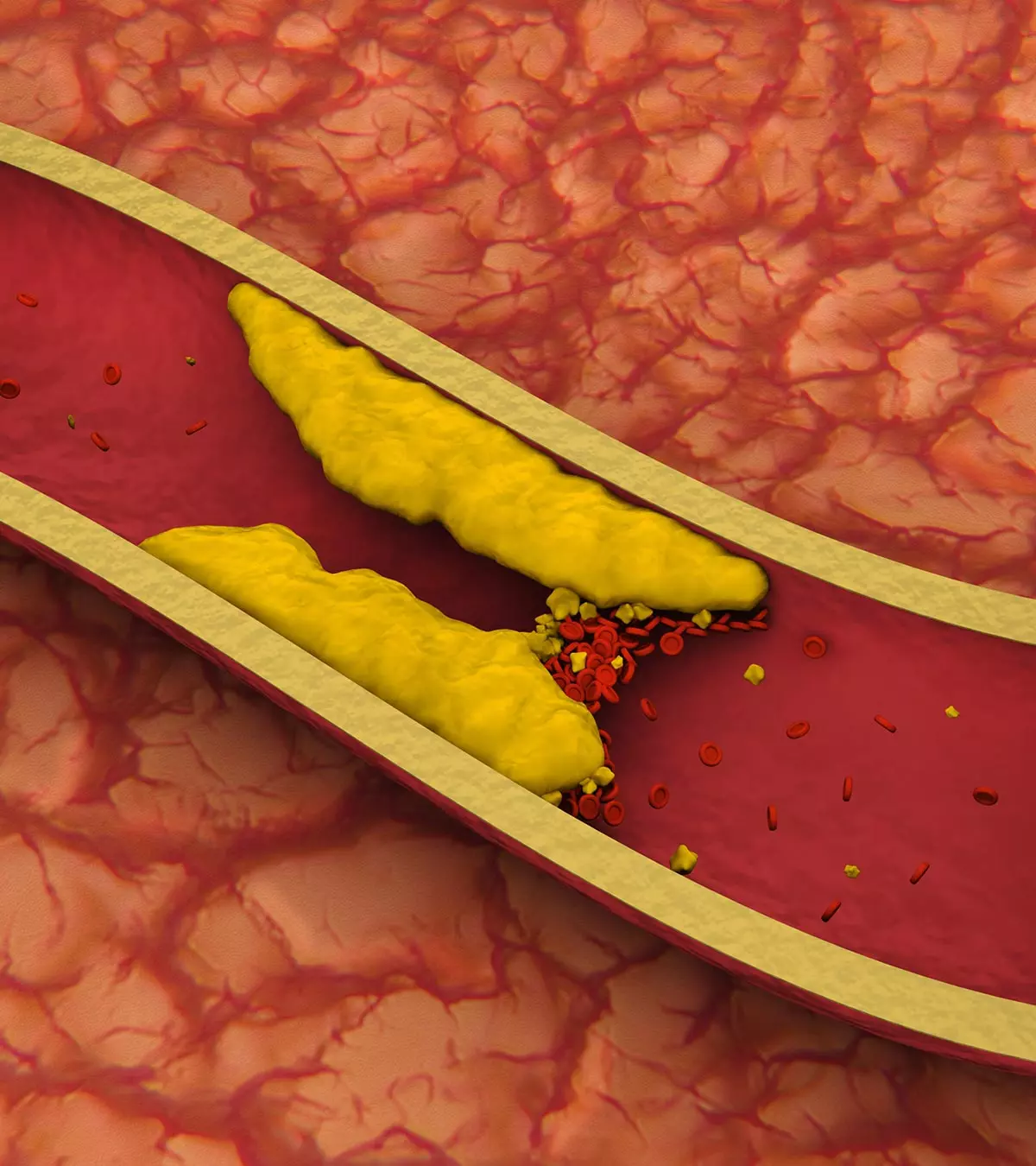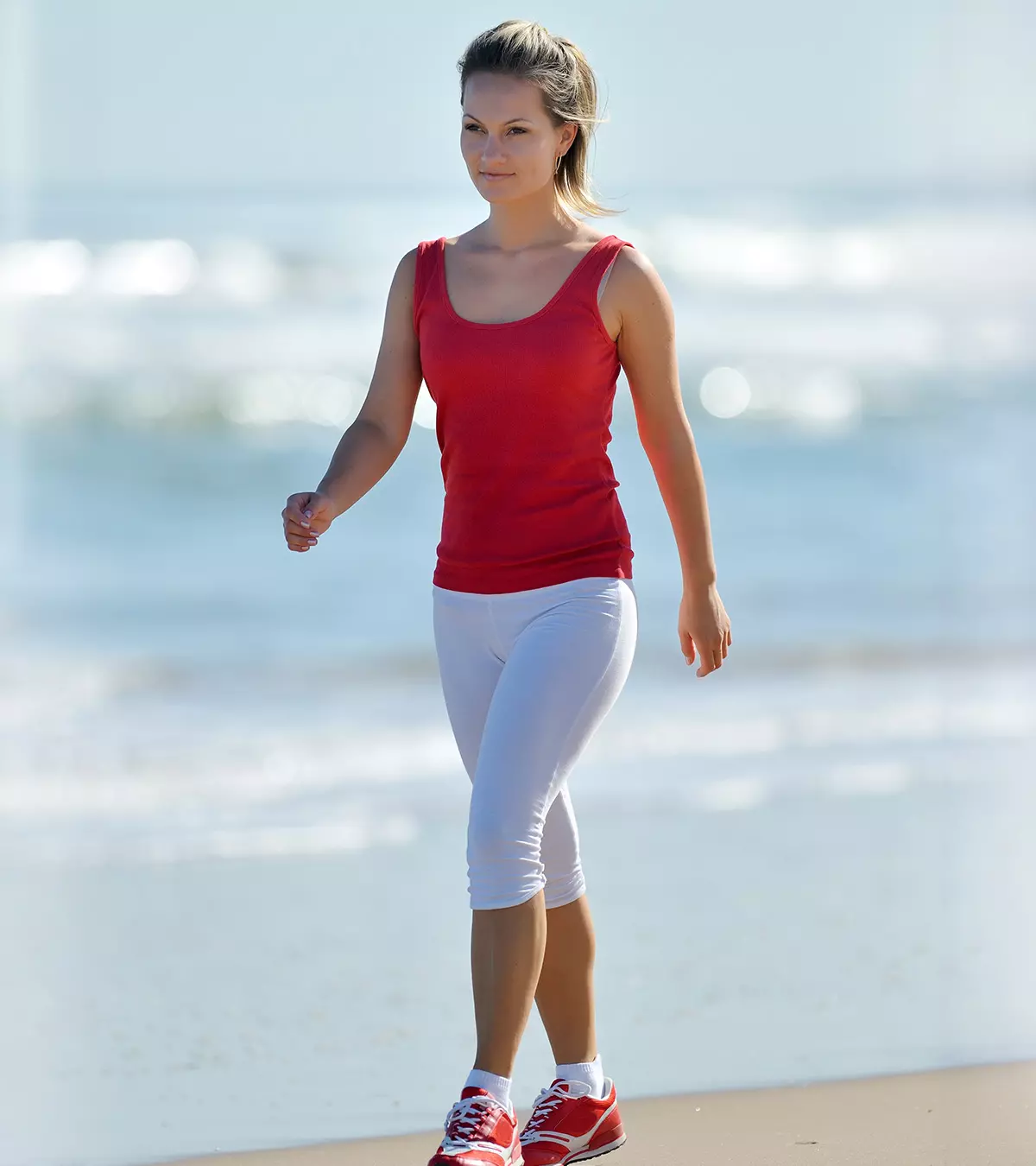
Image: Shutterstock
You will get busier after having a baby as you tend to your baby and their needs. At this time, you may also be thinking about “getting back in shape” and getting rid of your postpartum belly. While pregnancy exercises help improve your body posture and achieve a smooth pregnancy journey, postnatal exercises are equally important. They help speed up postpartum recovery and aid with muscle strengthening and toning after labor and delivery (1).
However, because your body is still recovering from the strain of labor and delivery, you should avoid any strenuous exercise for at least up to six weeks. It is recommended you wait until your 6-week postnatal check-up before starting any exercise regime (1).
Read this post to learn about the various postnatal workouts or new mom workouts and their advantages.
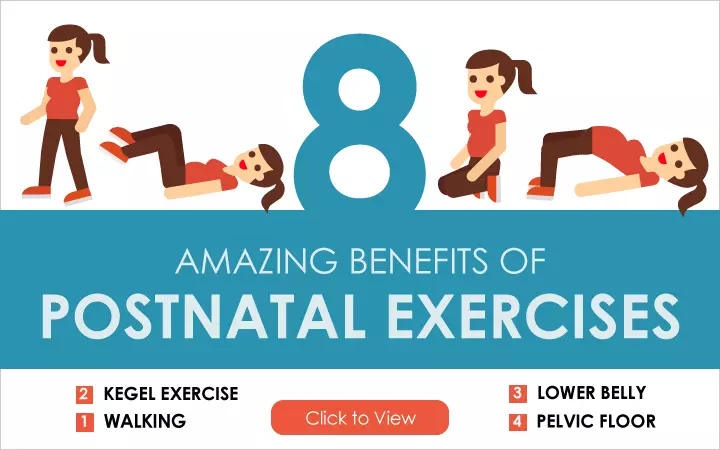
Click here to view an enlarged version of this infographic
Key Pointers
- Postnatal exercises are crucial for the overall health and happiness of women after childbirth.
- They provide several benefits, such as improving mood and energy levels, promoting healing, aiding weight loss, and building stamina.
- Strenuous exercises should be postponed for six weeks following birth.
- Ideal postnatal exercises include working on the lower belly, pelvic floor, and walking.
- Certain exercises, such as swimming, are best avoided for at least six months after delivery.
Importance Of Postnatal Exercises
Postnatal exercises are important after childbirth. They not only make your body fit and strong but are also important for your overall well-being.
If you intend on starting a bulk workout, understand that this is not a good idea. It is always ideal to start doing gentler exercises or low-impact workouts during the first few weeks after the delivery.
- Starting strength training is not a good idea.
- Start with gentler exercises during the first few weeks after the delivery.
 Things to know
Things to know7 Benefits Of Postnatal Exercises
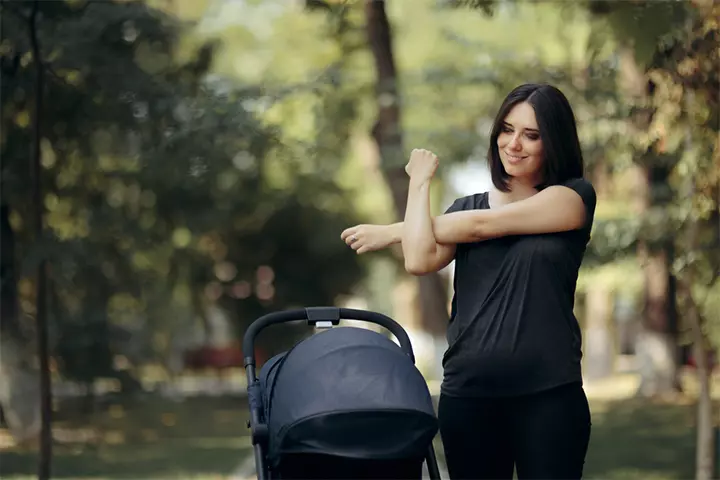
Image: Shutterstock
There are multiple benefits of doing postnatal exercises as your body starts to get back to normalcy. The postnatal exercises ideally help in the following ways (1):
- Help enhance your mood by increasing the release of good chemicals. You just had a roller coaster ride with those hormonal shifts. Postnatal exercises will help you regain your actual self.
- Heal your once pregnant body by getting rid of aches and pains.
- Help in postpartum weight loss management if pursued along with a balanced diet.
- Replenish your tired body with the vigor and vitality that you need to raise your baby.
- Enhance the stamina levels, helping you to take charge during motherhood.
- Tone your body and make it flexible.
- Reduce the postpartum blues with a healthy mind.
 Quick fact
Quick factIdeal Exercises After Delivery
You cannot do all kinds of exercises as soon as you deliver.
Your body is still raw, recovering from the stretching and pushing of childbirth. The postnatal care exercises are safe for both vaginal and cesarean childbirth. There are three types of postnatal exercises that you can gently start with (2):
1. Lower belly exercises

Image: Shutterstock
Your doctor will suggest beginning with light lower belly exercises that do not put extra stress on your abdomen.
- Lower belly exercises work in tandem with your pelvic exercises to give you a more fit body. They are among the best exercises to reduce belly fat after delivery.
- Postnatal breathing exercises.
- Inhale and exhale slowly as you hold the breath for a few seconds while holding your pelvic floor muscles.
- Once you have tightened your pelvic area, gently push your belly button upwards and downwards.
- Ensure that you are not moving your back or holding your tummy area too tight.
- At first, these exercises may feel difficult, but you will find yourself accustomed to them soon.
- Consult a trained physical fitness trainer to understand the kind of belly exercises you can start with.
2. Pelvic floor exercises
Pelvic floor exercises are important for postnatal mobility, balance, and strengthening (3)
.
- These exercises strengthen your pelvic muscles, helping you avoid urinary incontinence (UI). According to a study published in the International Urogynecology Journal, around 31% of women are affected by postpartum UI.
- Pelvic exercises aid in quicker healing of your perineum and vagina by improving the blood circulation around that area (4).
- This reduces the swelling and bruising that would have happened during normal delivery (5).
3. Walking

Image: Shutterstock
Walking is an important exercise regimen that will help you stay fit (6).
- Your doctor would have asked you to start walking within a few hours after delivery.
- This is to avoid forming blood clots in the body.
- Walking also helps you stay fit and agile.
- Start with short walks of about ten minutes and increase the time gradually.
- See what suits you the best, but do not ignore the postpartum fitness regime.
Lauren Brooks, a mother and a fitness, strength, conditioning & nutrition coach, shares her experience regarding postpartum exercise. She says, “I do feel that using kettlebells and remaining strong during both pregnancies, using pregnancy workouts, allowed me to recover in record time… While waiting to get the green light to use my kettlebells, I used walking as my outlet. I was given permission to start walking (for exercise) 2 weeks after surgery. Walking and the right nutrition have helped me over the past several weeks shrink down to a comfortable size (i).”
You can also try postnatal yoga, pilates, cardio, strength training, and postnatal weight training exercises for postpartum recovery after consulting with your doctor.
 Quick tip
Quick tipPostnatal Exercises To Be Avoided During The First Six Weeks
There are exercises that you possibly cannot engage in right away after delivery. Especially following exercises for the first six weeks are not recommended. You will have to cross the six-month mark to do the below exercises:
- Swimming is not recommended as it may lead to infections.
- Certain exercises are not allowed for women who underwent cesarean or stitches during vaginal delivery. Your doctor will recommend gentle exercises.
6 Postnatal Exercises For A Strong Pelvis, Upper Back, And Neck
Here are a few exercises that you can do to strengthen your pelvis, neck and back once you settle down comfortably in your exercise routine. You can take up these postnatal exercises after 6 weeks.
1. Pelvic tilts while lying down
Lie either on the floor or on the bed.
- Place a pillow under your head, bend your knees by lifting them.
- Now tighten your pelvic muscles and pull your tummy inwards.
- Hold the position for three seconds before you relax.
- Repeat the exercise 10 times.
- Do not forget to keep breathing throughout the exercise.
2. Pelvic tilts while sitting
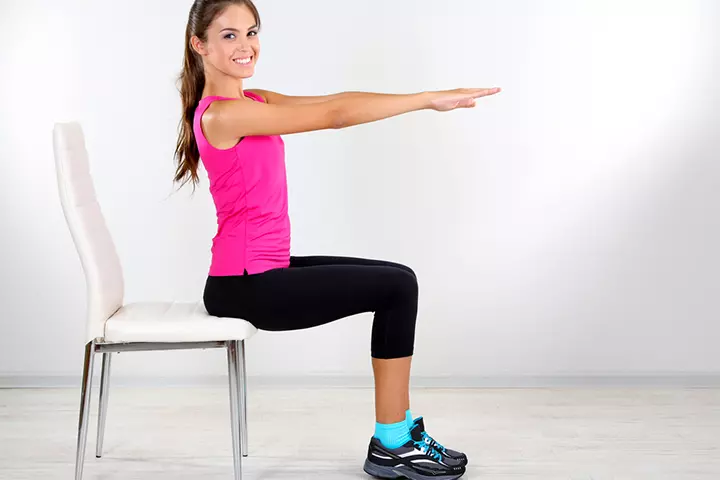
Image: Shutterstock
Sit on a stool or chair with your feet on the ground.
- Tighten your pelvic muscles while pulling your tummy inside.
- Arch your back in such a way that your chest and bottom stick out.
- Hold the position for a few seconds before you relax.
- Do not forget to breathe throughout the exercise.
3. Upper back exercise
Sit upright with arms crossed over your chest. Twist your body to the left and then to the right. Repeat the exercise 10 times in each direction.
- Sit and join your palms behind the neck.
- Twist your body to the left and then to the right.
- Repeat the exercise 10 times in each direction.
- Sit and join hands together in the front.
- Raise your arms above your head and stretch as far as you can.
- Hold the position for two to three seconds.
- Release and get back to the position.
4. Postpartum planks
Get on your knees and hands.
- Start by engaging your core and holding the position firmly for 30 seconds.
- Once you are able to do the first step easily, you can get into a slightly altered push-up position on your forearms and knees.
- Maintain this engaged core position for another 30 seconds before progressively increasing the time to a minute.
- Move to a standard push-up on your palms and toes when this push-up becomes too easy.
- Hold this engaged core position for another 30 seconds, gradually extending the time to a minute.
5. Swiss ball bird dog holds
Lie down on top of the ball so your waist is in the center of the ball’s surface.
- Keep both hands and feet on the ground, ensuring your body is straight.
- Raise your left arm and right foot at the same time.
- Hold the position for 10 seconds.
- Lower your left arm and right foot, and then raise your right arm and left foot in the same manner.
- Keep repeating this pattern back and forth.
6. Neck:
Sit comfortably with your legs crossed in a squatting position.
- Turn your head slowly to the right and then to your left.
- Rotate your head five times each in a clockwise and anticlockwise direction.
- Release.
Points To Remember:
It would be difficult to commence an exercise routine after a long hiatus of pregnancy and baby bump. Here are a few points to remember while you undertake the first initiative to wellness with postnatal exercises:
- You will find it exhausting and time-consuming at first, but keep going.
- Do not expect magical results from your postnatal exercises. Your body will take time to respond.
- Do not overdo the exercises once you feel good to go.
- Follow the instructions given by your doctor and your trainer for the exercises during the first six weeks after delivery.
- Do not hit the gym after the six weeks for an aggressive workout consulting your doctor. You must first understand where you stand in terms of physical fitness.
- Do not put pressure on your lower abdomen or lift heavy objects during the first six weeks. This is the time when your pelvic and tummy muscles heal completely.
 Quick tip
Quick tipFrequently Asked Questions
1. How can I make sure I am doing postnatal exercises correctly?
Develop a safe and effective exercise program after consulting a qualified postnatal fitness professional or physical therapist to ensure you perform postnatal exercises correctly. Additionally, starting slowly, gradually increasing the intensity and duration of your workouts, and staying aware of signs of problems is essential.
2. Can I do postnatal exercises at home?
Postnatal exercises may be safely practiced at home by learning the correct form of the exercises, using proper techniques, and maintaining the right posture.
3. How long should I do postnatal exercises for each session?
The duration of postnatal exercise sessions will depend on your fitness level and the exercise you perform. A typical postnatal exercise session may last 20-30 minutes, but this can vary depending on your needs and goals.
4. What should I do if I experience pain during postnatal exercises?
Stop the exercise immediately and consult your healthcare provider. Pain can be a sign that you are pushing yourself too hard or that an underlying issue needs to be addressed.
5. How can I incorporate postnatal exercises into my daily routine?
To incorporate postnatal exercises into your daily routine, schedule a specific time each day for your workout to stay consistent and make exercise a habit. Also, look for opportunities to be active throughout the day, such as taking short walks or lifting light dumbbells while your baby is asleep.
Postnatal exercises are important because they help tone and strengthen the muscles post-delivery. They also relieve aches and pains, release good hormones, and manage weight. Some exercises that you may try are lower belly exercises, walking, and pelvic tilts. However, since your body is still recovering after childbirth, start with gentle exercises. Do not overdo your workouts to expect quick results. Instead, give your body adequate time and rest and allow it to heal slowly. If you have some medical condition, talk to your doctor before starting any exercise regime.
Infographic: Points To Remember Before Trying Postnatal Exercises
Many women may consider workouts and exercises soon after childbirth to return to their pre-pregnancy shape. But remember to be gentle and pace your workouts to avoid exerting pressure and allow your body to heal. So here are a few helpful tips to remember before and during your postnatal exercises to stay safe.

Illustration: Momjunction Design Team
Illustration: Amazing Benefits Of Postnatal Exercises After Delivery
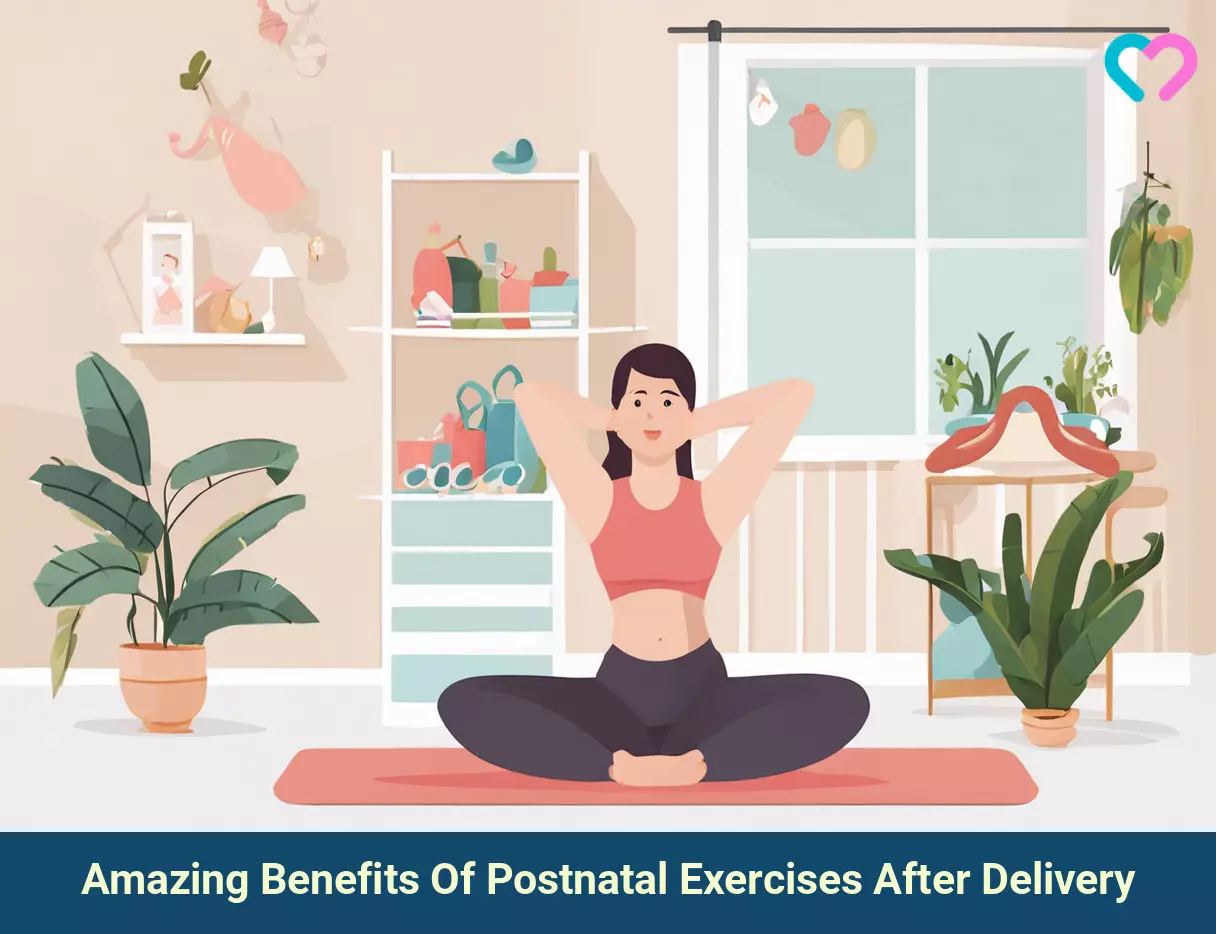
Image: Stable Diffusion/MomJunction Design Team
Discover simple workouts to rebuild and improve your core muscles for expecting and postpartum mothers. Incorporate these exercises into your program to reclaim your body’s shape and strength.
Personal Experience: Source
MomJunction articles include first-hand experiences to provide you with better insights through real-life narratives. Here are the sources of personal accounts referenced in this article.
i. 6 weeks postpartum! round 2.https://laurenbrooks.laurenbrookstraining.com/2009/03/6-weeks-postpartum-round-2.html
References
- Postnatal exercise.
https://www.betterhealth.vic.gov.au/health/healthyliving/postnatal-exercise - Postnatal exercise.
https://www.fhs.gov.hk/english/health_info/woman/15658.pdf - Your post-pregnancy body.
https://www.nhs.uk/conditions/baby/support-and-services/your-post-pregnancy-body/ - Kegel Exercises.
https://my.clevelandclinic.org/health/articles/14611-kegel-exercises - Your vagina and pelvic floor after giving birth.
https://www.nct.org.uk/information/labour-birth/recovery-birth/your-vagina-and-pelvic-floor-after-giving-birth - What You Should Know About Exercising After Having a Baby.
https://rightasrain.uwmedicine.org/life/parenthood/exercise-after-baby#:~:text=It%20may%20not%20seem%20like - Exercise After Pregnancy.
https://www.acog.org/womens-health/faqs/exercise-after-pregnancy
Community Experiences
Join the conversation and become a part of our nurturing community! Share your stories, experiences, and insights to connect with fellow parents.
Read full bio of Dr. Mona Hardas
Read full bio of Rebecca Malachi
Read full bio of Swati Patwal
Read full bio of Aneesha Amonz
















